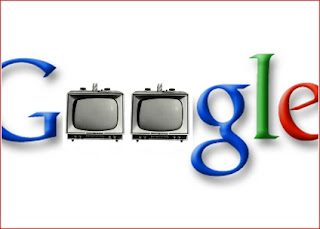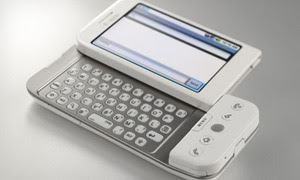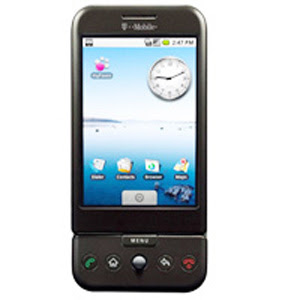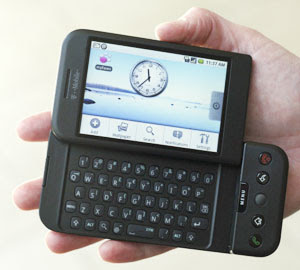Google Adwords Video
Tuesday, May 18, 2010
Thursday, May 6, 2010
Google TV Software
Search engine giant Google is doing something different. Google is planning to introduce Android-based television software in May which will enable the users to access television through internet.
The new software, designed to open set-top boxes, TVs and other devices to more content from the internet, is attracting interest from partners that include Sony Corp., Intel Corp. and Logitech International SA, which are expected to offer products that support the software, according to people familiar with the matter.
However, none has so far discussed the efforts publicly, The Wall Street Journal reported. Google, of Mountain View, California, is currently planning on sharing some details about the technology with more than 3,000 developers expected to attend its conference in San Francisco May 19 and 20.
One person familiar with the matter cautioned that the company could also decide to delay discussing it until the technology is more mature. Google uses the annual conference to showcase a range of technologies of interest to developers.
The decision to address developers suggests that the internet giant may be hoping to kick-start a race to build applications for its TV platform, much in the same way that Google, Apple Inc. and others have courted developers for smartphones.
The app-store approach has already begun to gain traction among some players in the TV market, too, aided by the advent of TVs, Blu-ray players and other hardware with internet connections.
The service, which uses the new Google technology, allows users to access and search across programming from the internet as well as Dish's conventional programming. The test, which began last year, is still limited to a very small number of the company's employees and their families.
The new software, designed to open set-top boxes, TVs and other devices to more content from the internet, is attracting interest from partners that include Sony Corp., Intel Corp. and Logitech International SA, which are expected to offer products that support the software, according to people familiar with the matter.
However, none has so far discussed the efforts publicly, The Wall Street Journal reported. Google, of Mountain View, California, is currently planning on sharing some details about the technology with more than 3,000 developers expected to attend its conference in San Francisco May 19 and 20.
One person familiar with the matter cautioned that the company could also decide to delay discussing it until the technology is more mature. Google uses the annual conference to showcase a range of technologies of interest to developers.
The decision to address developers suggests that the internet giant may be hoping to kick-start a race to build applications for its TV platform, much in the same way that Google, Apple Inc. and others have courted developers for smartphones.
The app-store approach has already begun to gain traction among some players in the TV market, too, aided by the advent of TVs, Blu-ray players and other hardware with internet connections.
The service, which uses the new Google technology, allows users to access and search across programming from the internet as well as Dish's conventional programming. The test, which began last year, is still limited to a very small number of the company's employees and their families.
Thursday, April 22, 2010
G1 - No Stereo Bluetooth
I thought I might be able to circumvent this problem by using a stereo Bluetooth headset, but, alas, the G1 only supports non-stereo Bluetooth headsets.
True smartphone greatness can take time, and I'm willing to cut Google a little slack. After all, the first iPhone wowed, but it was not without issues and missing features. The second version was better, and yet still there is plenty of room for improvement.
So I'm optimistic the G1 will improve soon, partly through its over-the-air software updates and additions to the Android Market. Google's search engine was not the first of its kind, either. And we all know how that worked out.
True smartphone greatness can take time, and I'm willing to cut Google a little slack. After all, the first iPhone wowed, but it was not without issues and missing features. The second version was better, and yet still there is plenty of room for improvement.
So I'm optimistic the G1 will improve soon, partly through its over-the-air software updates and additions to the Android Market. Google's search engine was not the first of its kind, either. And we all know how that worked out.
G1 - No Headphone Jack
Unfortunately, video and song playback is hampered by a major hardware shortcoming: the G1 eschews a standard headphone jack in favour of an included but uncomfortable earbud headset, which plugs into the mini USB port that is also used to charge the phone.
This poses several problems, as you can't use your favorite headphones without an adapter and it's impossible to charge the G1 while listening to music or watching videos, unless you want to use the included speaker.
This poses several problems, as you can't use your favorite headphones without an adapter and it's impossible to charge the G1 while listening to music or watching videos, unless you want to use the included speaker.
G1 - Applications
I liked a few applications, especially the "Barcode Scanner" that uses the G1's 3 megapixel camera to read the UPC barcodes on things like product boxes and book jackets and then links you to related Web searches. It's pretty nifty if you want to know more about a novel or check prices online.
Some applications take advantage of the G1's GPS capabilities, like one called "Ecorio" that tracks your trips and computes your carbon footprint. The G1 also connects to Amazon.com Inc's online MP3 store, which was easy to browse and offered quick downloads of songs free of copy protection.
Take note, though, that as with the iPhone you'll need Wi-Fi access rather than just 3G cellular connectivity to download songs wirelessly. The phone's built-in support for YouTube may appeal to video fans, but it was underwhelming to me. Even though Google owns YouTube, the clips I watched on the Google phone looked poorer than they tend to on a desktop computer.
Some applications take advantage of the G1's GPS capabilities, like one called "Ecorio" that tracks your trips and computes your carbon footprint. The G1 also connects to Amazon.com Inc's online MP3 store, which was easy to browse and offered quick downloads of songs free of copy protection.
Take note, though, that as with the iPhone you'll need Wi-Fi access rather than just 3G cellular connectivity to download songs wirelessly. The phone's built-in support for YouTube may appeal to video fans, but it was underwhelming to me. Even though Google owns YouTube, the clips I watched on the Google phone looked poorer than they tend to on a desktop computer.
G1 - Open to third-party developers
A key element is the Google-run Android Market, which lets third-party developers offer add-on programmes and games that you can download wirelessly to the G1. For now, downloads are free, but eventually some may cost money.
There weren't that many programmes available when I tested the G1 -- I counted about three dozen applications and 10 games, a fraction of what Apple's iPhone App Store contains -- but more should come soon. And while Apple has been slowly approving iPhone applications and rejecting some that compete with its own programmes, the Android Market is more open to developers.
There weren't that many programmes available when I tested the G1 -- I counted about three dozen applications and 10 games, a fraction of what Apple's iPhone App Store contains -- but more should come soon. And while Apple has been slowly approving iPhone applications and rejecting some that compete with its own programmes, the Android Market is more open to developers.
G1 provides Big Screen
Early on, I noticed that the G1's main screen actually extends beyond the device's viewing area. You can access the "hidden" parts by swiping to the right or left of the screen.
I used this to organize shortcuts to certain programmes by type: I put all my game shortcuts on the left "screen" and kept shortcuts to things like my contacts, Gmail, browser and phone dialer on the main screen area.
I used this to organize shortcuts to certain programmes by type: I put all my game shortcuts on the left "screen" and kept shortcuts to things like my contacts, Gmail, browser and phone dialer on the main screen area.
G1 - powerfull battery backup
The downside of all the talking, Web surfing and content downloading is that it can quickly run down a phone's battery. The G1 promises up to five hours of talk time and nearly 5 1/2 days of standby time, but who's going to simply chat on a smartphone or let it sit gathering dust?
I gave the device a fairly realistic battery rundown -- on-and-off use of multiple functions and applications and the phone's 3G and Wi-Fi network capabilities. It's safe to say people with a serious multimedia habit will have to keep a charging cable on hand.
I gave the device a fairly realistic battery rundown -- on-and-off use of multiple functions and applications and the phone's 3G and Wi-Fi network capabilities. It's safe to say people with a serious multimedia habit will have to keep a charging cable on hand.
3g Support by G1
I was more impressed with the speed of T-Mobile's 3G network than I have been with AT&T's, and noticed applications and songs downloaded fairly quickly and easily.
This could change, though, as the network is still quite new and there are not many phones running on it yet. The phone also works on T-Mobile's slower but more widespread EDGE network; however, data functions aren't as zippy.
This could change, though, as the network is still quite new and there are not many phones running on it yet. The phone also works on T-Mobile's slower but more widespread EDGE network; however, data functions aren't as zippy.
G1 gives all services of Google like Gmail, Google Talk
From the start, the G1 was easy to use. It includes an intuitive interface and many of Google's familiar services, like search, Gmail and Google Talk.
There's also Google Maps, which is enhanced by a built-in compass that lets you see locations in the "Street View" feature by moving the phone as you hold it.
I had no trouble doing things like instant messaging my friends, searching for bubble tea stores near my apartment, and yes, making phone calls. There is a good-looking browser that is pretty simple to navigate, and the device's screen is clear and sharp.
There's also Google Maps, which is enhanced by a built-in compass that lets you see locations in the "Street View" feature by moving the phone as you hold it.
I had no trouble doing things like instant messaging my friends, searching for bubble tea stores near my apartment, and yes, making phone calls. There is a good-looking browser that is pretty simple to navigate, and the device's screen is clear and sharp.
G1's Memory
There's also an adjacent microSD card slot that comes loaded with a 1GB card. Don't lose this tiny card, because it's the storage spot for photos and songs you want to access on the G1.
If you want to invest in more space, the G1 supports cards up to 16 GB
If you want to invest in more space, the G1 supports cards up to 16 GB
Google's G1 Looks
Made by Taiwan's HTC Corp, the G1 is being released on October 22 by T-Mobile in the US and will cost $179 with a two-year contract. The device, about the size as the iPhone but plumper, will be available in black or bronze. It sports a large touchscreen, and the lower smidgen of the device is angled -- the curvature seemed more stylistic than functional to me -- and sports four buttons and a trackball.
Beneath the touchscreen is a slide-out QWERTY keyboard that makes the G1 feel like a grownup's version of another device T-Mobile sells, the Sidekick. The keyboard will appeal to anyone who, like me, still prefers the feel of physical keys rather than virtual ones on the screen (sorry, Apple).
Beneath the touchscreen is a slide-out QWERTY keyboard that makes the G1 feel like a grownup's version of another device T-Mobile sells, the Sidekick. The keyboard will appeal to anyone who, like me, still prefers the feel of physical keys rather than virtual ones on the screen (sorry, Apple).
Google Phone G1 - Reviews
Given Google Inc's reputation as a trend setter on the Web, expectations were high from its first mobile phone -- especially since it is emerging more than a year after Apple Inc launched the enormously popular iPhone.
And while it's far from perfect, the G1 powered by Google's Android operating system is packed with plenty of consumer-oriented features that may even make iPhone fans take notice.
And while it's far from perfect, the G1 powered by Google's Android operating system is packed with plenty of consumer-oriented features that may even make iPhone fans take notice.
Monday, April 19, 2010
Google wants to kill iPhone .. Is it True?
Apple-Google ties seem to be increasingly going downhill. The attacks by the two companies on each other are getting nastier. With Apple
co-founder Steve Jobs telling employees that Google wants to kill iPhone.
"We did not enter the search business," Jobs told Apple employees, according to an article in NewYork Times. "Make no mistake Google wants to kill the iPhone. We won't let them," said Jobs shortly after the public introduction of iPad.
The relationship between the two companies has been in rough weather for some time.
The recent introduction of Google's own handset Nexus One further jarred the relationship. Nexus One, which runs on Google's own mobile operating system Android, has put the company in direct competition with Apple.
Apple too this month sued Taiwan's HTC Corp, which makes touchscreen smartphones using Google software and introduced first Google phone. Apple has accused HTC of infringing 20 hardware and software patents related to the iPhone.
Even though the suit did not name Google as a defendant, Apple's move is viewed by many analysts as proxy for an attack on the Internet company.
Similarly, though for now, Google is the default search engine on Apple iPhone, there are speculations that Apple might go for Google's biggest foe Microsoft's Bing as the default search engine on its computing slate iPad.
The two companies are also said to have also fought over acquisitions. In November 2009, Google announced its $750 million acquisition of mobile advertising company AdMob. According to some reports, Apple too had made a $600 million bid for AdMob.
In January Apple acquired another mobile advertising firm, Quattro Wireless, for $300 million.
The growing straining of ties also lead to Google CEO Eric Schmidt resigning from Apple's board in August 2009.
co-founder Steve Jobs telling employees that Google wants to kill iPhone.
"We did not enter the search business," Jobs told Apple employees, according to an article in NewYork Times. "Make no mistake Google wants to kill the iPhone. We won't let them," said Jobs shortly after the public introduction of iPad.
The relationship between the two companies has been in rough weather for some time.
The recent introduction of Google's own handset Nexus One further jarred the relationship. Nexus One, which runs on Google's own mobile operating system Android, has put the company in direct competition with Apple.
Apple too this month sued Taiwan's HTC Corp, which makes touchscreen smartphones using Google software and introduced first Google phone. Apple has accused HTC of infringing 20 hardware and software patents related to the iPhone.
Even though the suit did not name Google as a defendant, Apple's move is viewed by many analysts as proxy for an attack on the Internet company.
Similarly, though for now, Google is the default search engine on Apple iPhone, there are speculations that Apple might go for Google's biggest foe Microsoft's Bing as the default search engine on its computing slate iPad.
The two companies are also said to have also fought over acquisitions. In November 2009, Google announced its $750 million acquisition of mobile advertising company AdMob. According to some reports, Apple too had made a $600 million bid for AdMob.
In January Apple acquired another mobile advertising firm, Quattro Wireless, for $300 million.
The growing straining of ties also lead to Google CEO Eric Schmidt resigning from Apple's board in August 2009.
Thursday, February 11, 2010
Subscribe to:
Posts (Atom)













